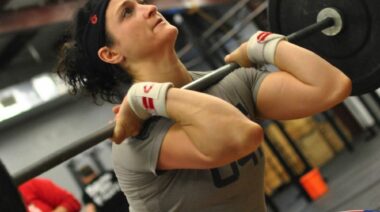Plant protein has gained a ton of popularity lately and for good reason. More active people are opting for plant-based diets and are reaping healthier rewards for the intentional dietary shift. Plant protein has also begun to take on a life of its own as more pure, chemical-free formulas hit the market.
But what’s all the hype about? What makes plant protein the new go-to protein source for so many athletes and average Joes? More specifically, what are the major differences between plant proteins and animal proteins—which should you choose for the long term?
With a laundry list of benefits, it’s a no-brainer that plants serve as an integral part of our health and vitality. Of course, animal protein has plenty to offer, too. But are there benefits to one over the other?
Let’s dissect the subject and talk a little about each protein source—how they affect your overall health, well-being, and which is the best for your specific needs.
What Is Plant Protein?
It will first take an understanding of what a protein is before we can define the specifics of plant protein. Proteins are large molecules that consist of long chains of amino acids. Aside from being the proverbial building blocks of protein, they are also responsible for an array of functions, such as replicating DNA, moving molecules, and catalyzing metabolic reactions. They differ based on their sequence of amino acids.
Proteins are essential in our diets, and since we cannot synthesize all the amino acids necessary for survival (22 in all), we must obtain some through food intake. There are nine “essential amino acids” the body cannot produce, and this is where a dietary protein comes into play. Animal protein foods such as meat, poultry, fish, milk, eggs, and cheese contain all the amino acids necessary and are referred to as complete proteins.
An incomplete protein source is one that is low in one or more essential amino acids. For example, some key plant proteins are often low in methionine, tryptophan, lysine, and isoleucine. Complimentary proteins are two or more incomplete protein sources that together provide adequate and complete amounts of all the essential amino acids. For example, both rice and beans are low in specific amino acids, but when combined they are considered complete.
Plant proteins are considered incomplete proteins by themselves. But before you make up your mind regarding types to choose from, let’s look at plant protein a little closer. Almonds, rice, soy, peas, and other plant sources for protein all contain quality amino acids. As stated earlier, some are deficient in certain amino acids but when combined with a variety of healthy foods, namely other protein sources, they can become powerful additions to any diet. There are so many other benefits to plant proteins which will be covered later.
Being referred to as an incomplete protein, many plant proteins aren’t necessarily void of any essential amino acid, they are simply only low in a few specific types. So, when you eat a balanced diet full of variety, the amino acid profile of plant based protein improves dramatically.
What’s the Difference?
As a nation that is fully trenched into eating animal-based protein sources with options literally on every corner, it’s a tough sell to convince the public that plant protein is a viable option for everyday use, let alone athletic performance. The question posed to vegetarians is often, “Where do you get your protein?” Animal protein advocates will frequently pontificate the advantages of animal sources, ranging from the aforementioned complete amino acid profile to the inclusion of beneficial micronutrient minerals.
But what are the real differences between these two sources?
Yes, animal proteins contain a more complete amino acid profile, but so can a balanced approach to plant-based protein. And it’s not rocket science. By simply eating a wide variety of fruits and vegetables, there’s a good chance of getting enough amino acids from plant sources. So, you don’t need to stress over the need to get specific combinations; just eat a variety of foods and you’re likely covered.
You may find that plant-based protein is the answer to more of your health questions than you once thought.
The Benefits of Plant Protein
A diet rich in plant-based protein also comes with myriad health benefits. These can include lower body weight, lower blood pressure, and lower cholesterol levels when compared to the traditional animal protein and carbohydrate diets. Plant protein may also decrease the risk of heart disease and may stabilize blood sugar levels.
On the subject of lower body weight, plant-based proteins tend to make you feel fuller longer and can help stabilize energy levels. This prevents hunger pangs, so losing body fat becomes a little easier.
Plant protein sources also contain many key nutrients such as anti-inflammatory compounds, vital vitamins, minerals, fiber, and antioxidant phytonutrients known to improve health without excess calories.
Plant based protein boasts more sustainability and less environmental impact. It requires less overall production cost and contributes less atmospheric pollution than meat production.
Finally, the often-raised issue of plant protein not being “complete” is wholly overblown. It isn’t a requirement that you get all essential amino acids at one sitting. By using the rule of complimentary proteins, you can benefit from eating from a variety of sources all day and achieve complete amino acid profiles.
Are There Drawbacks to Animal Proteins?
As stated earlier, there are plenty of benefits to animal protein: complete amino acid profiles along with being rich in key nutrients such as B vitamins and iron. But there are drawbacks that should be considered when health and overall weight control are concerns.
A diet rich in animal protein may pose more risks. The meat may be filled with additional hormones, antibiotics, bacteria, and parasites. Arachidonic acid is a fatty acid found in varying concentrations in all meats and is thought to promote pro-inflammatory health concerns. Animal protein is also tougher to digest, which can put a strain on the liver. Most animal protein sources will be exposed to high heat during cooking, and this can denature the protein, leaving less quality protein than when you started.
Finally, if you favor processed meat varieties such as lunch meat, pre-made hamburgers, hot dogs, sausage, and bacon, you need to keep a close eye on your sodium consumption and nitrate levels. Used to help preserve shelf life, salt is added in copious amounts to processed meat for taste, transportation, and freshness. Nitrates are a preservative compound linked to tumor and cancer growth.
Which Should You Choose?
If you have been the traditional animal protein eater for most of your life, and feel like a change is in the cards, then you might want to give plant-based protein a closer look. This doesn’t entail bowls of tasteless tofu. You could simply replace a meal or two of animal protein with a plant-based source each day, or even take an entire day or two from each week to go all-plant.
There are many options to choose from, including seeds, nuts, lentils, greens, as well as quinoa, beans, and peas. Lentils and other legumes, for example, make well-rounded snacks that are high in protein, iron, and fiber. Beans and peas are both versatile vegetables that are full of protein, minerals, and vitamins (like folate and zinc that can aid in cell growth, especially after tough workouts).
Give Plant Protein a Try
Full of phytonutrients, fiber, and protein, plant protein is a wise choice without the extra negative health baggage some meat can bring along with it. And there’s one last thing to consider when you do switch to more plant sources in your diet—you may enjoy positive changes in bloating, energy, restful sleep, and mood. You may find that plant-based protein was the answer to more of your health questions and concerns than you once thought.
More on diet variance:






